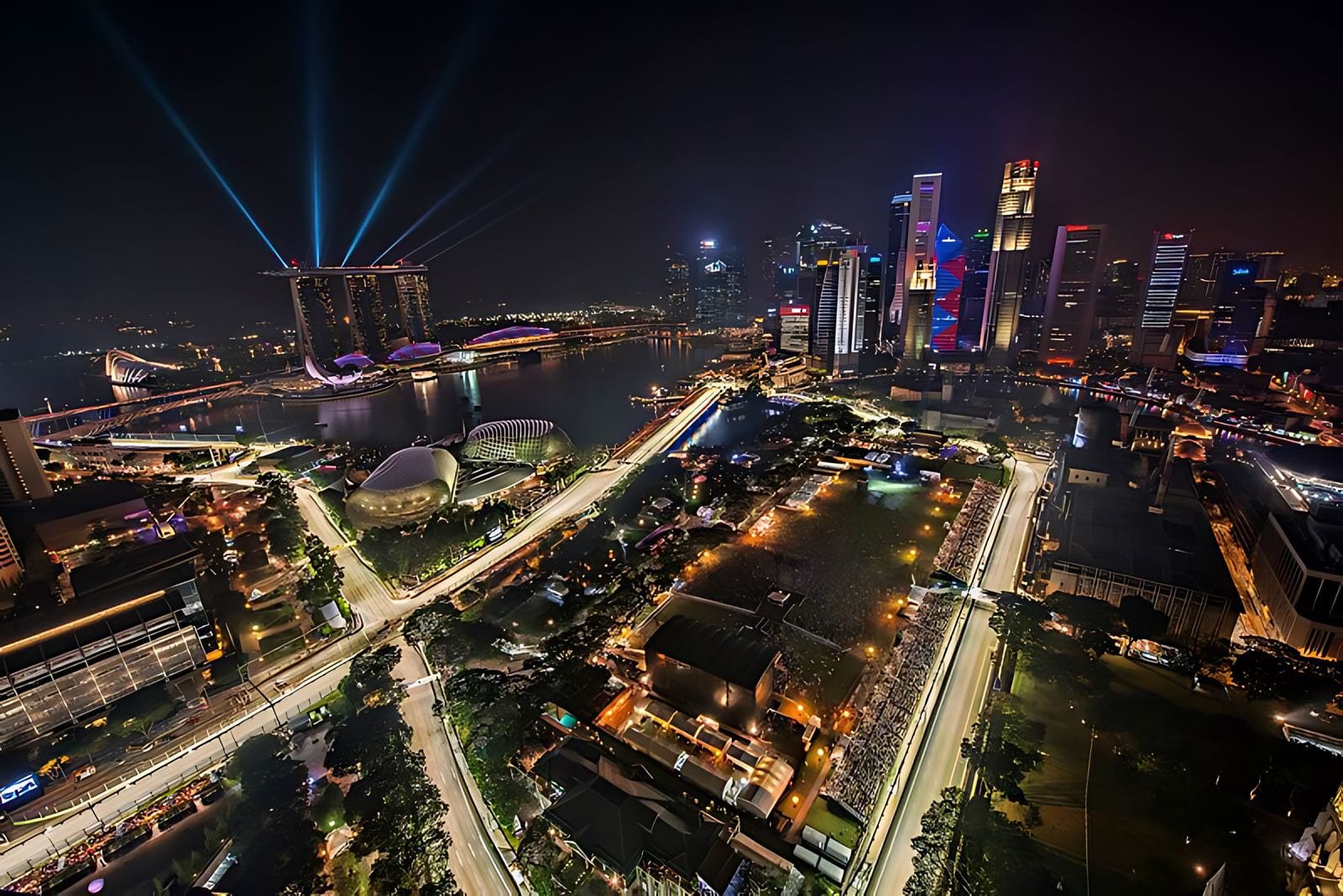Estimated reading time: 4 min
“Manchester of the East”
It’s remarkable to think that, in 1819, Singapore aspired to be a “Manchester of the East,” as it began to experience significant growth under British rule. Indeed, it was Sir Stamford Raffles who pressed for a clear urban plan as Singapore began to struggle to accommodate an increasing number of immigrants who arrived looking for work in this new boomtown. The Jackson Plan, named after Lieutenant Philip Jackson, laid the groundwork for what modern Singapore would become and the essence of this plan continues today. Though it obviously dated due to the exponential growth Singapore has experienced, the grid pattern that was originally implemented still remains crucial to the city’s efficient design today.
 Singapore survey map in 1825 taken from the British Library India Office Records
Singapore survey map in 1825 taken from the British Library India Office Records
Development
The Second World War disrupted development and by the mid-1950s, there were approximately 240,000 squatters in the city providing a serious headache for planners. In fact, it’s estimated that 25% of the population were living on just 1% of the land at this time. The need for a solution was clear and planners opted for an aggressive slum clearance as the best course for urban-renewal. It was as radical then as it would be now and there followed a struggle to re-house the squatters who were not always happy to go along with the government-enforced plans. However, as time passed and the city grew in size and prosperity (external trade jumped from $7.3bn to $205bn under Lee Kuan Yew’s leadership) there were notable benefits for its citizens as their life expectancy leapt from 65 to 74 years and living conditions noticeably improved. Like the skyscrapers that dominate its skyline, this was a city on an unstoppable rise.
 City planners pour over the urban design in meticulous detail by CC BY-SA 3.0
City planners pour over the urban design in meticulous detail by CC BY-SA 3.0
Modern Day Singapore
Singapore is often heralded as an example of what a city should aspire to be when it comes to urban planning and it’s with some justification. Self-sufficient towns within the city have managed to ease the strain upon the Central Area. The regional centres mean that a city of high urban density is never put under too much pressure from its citizens in one particular zone. These towns within the city offer many of the services of a modern day city but remove the need to travel to the traditional inner-city zones especially outside of traditional office hours. And these inner-city zones are monitored with a strict congestion charging system, first implemented in 1975, that has encouraged 65% of commuters to use public transport as opposed to private cars. As Harvard urban economist Edward Glaeser commented: “you have the second densest country in the world, that has virtually uncongested streets.”
Glaeser continued: “Singapore is close to being an ideal model of what good land-use planning looks like in the 21st century. It is filled with high-density dwellings, both in the inner-city and in more suburban areas, where high-rise public housing is the model of choice.”
 RMJM’s Khoo Teck Puat Hospital, Singapore
RMJM’s Khoo Teck Puat Hospital, Singapore
RMJM’s Singapore Legacy
The symmetrical lines that underpin Singapore are served by an efficient transport system that RMJM played a significant role in developing. Sixteen underground metro stations were individually designed by RMJM to respond to the city’s dense population and limited space. As the city sought to encourage more citizens to use public rather than private transport these stations required clarity in passenger orientation and expert scaling. These sixteen stations continue to serve one of the world’s most efficient transport systems.
Yet for all of the meticulous planning it’s many of the remarkable structures that stand testament to Singapore’s brilliance. RMJM have won numerous projects in the city and they have each added something tangible to its fabric. The Khoo Teck Puat Hospital, winner of several awards including the 2011 SIA Architectural Design Award for Best Healthcare Building, 2011 Building of the Year and 2011 Design of the Year, stands out as one of RMJM’s most significant projects. Sustainability was a key focus for the hospital and thanks to some pioneering design the 590-bed hospital runs on much lower energy costs than normal. Further, it achieved the highest rating in Singapore’s Green Mark program. As a city that has set the barometer for others in terms of planning, design and architecture, Singapore is well placed to reap the benefits of its far-sightedness for decades to come.
RMJM worked on the Khoo Teck Puat Hospital alongside CPG Consultants PTE LTD.
Header image courtesy of Chensiyuan under license CC BY-SA 3.0


